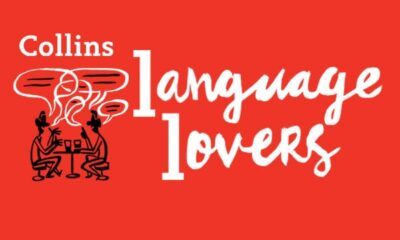This February, UNESCO and UN-Women celebrate the International Day of Women and Girls in Science, a day which aims to connect the scientific community, promote gender equality and encourage more girls to pursue STEM subjects in their education.
According to UNESCO, only 35% of all students in STEM fields of study are women. At Collins Dictionary, we’re marking the day with a themed word of the week that celebrates women in science. We’ve pulled together each of the words and the women who inspired them, plus some bonus vocab, for you to learn more below.
Curie
First up in our list is Curie, in honour of French scientist Marie Curie. Curie is considered an icon in the world of science for her work as a chemist and a physicist. Curie was the first woman to receive a Nobel Prize in 1903, awarded in recognition of her research into radiation phenomena, and she won again in 1911 for the isolation of radium.
Her work set the tone for a generation of female scientists and was built upon by her daughter, Irène Joliot-Curie, who won her own Nobel Prize in 1935 and helped advance the fight against cancer. In addition to Curie’s dictionary entry in her own right, a curie is also defined as a unit of radioactivity that is equal to 3.7 × 1010 disintegrations per second.
Lovelace
Augusta Ada King, Countess of Lovelace and English mathematician, is notable for her work as the world’s first computer programmer. The daughter of celebrated poet Lord Byron, Lovelace’s mother insisted on providing a private education in mathematical training, a highly unusual study in the 1800s for a young woman.
Working as an associate of Charles Babbage, the inventor who conceived the first automatic digital computer, Lovelace created a prototype of the Analytical Engine, generally regarded as the first computer. Her influence on modern-day computing is profound, and an early programming language developed in the 1970s was named in her honour.
STEM
An acronym for Science, Technology, Engineering and Mathematics, STEM education is a teaching approach which combines these four core subjects to develop practical skills, increase problem-solving, and ultimately encourage more children and young people to pursue technical careers.
In recent years, STEM has become a key part of the UK curriculum, largely due to increasing career prospects in the field. For example, coding and engineering are two in-demand skills as AI[5] becomes more prominent in day-to-day life. Teaching STEM subjects from an early age is also likely to inspire confidence in young girls, which is key to closing the gender gap in STEM careers and expanding our scientific knowledge, as demonstrated by the incredible female scientists who have pioneered significant discoveries.
Tereshkova
Tereshkova appears in the dictionary in honour of Valentina Vladimirovna Tereshkova, the engineer and former Soviet cosmonaut known for being the first – and the youngest – woman in space. Tereshkova flew a solo mission on the Vostok 6 in June 1963, orbiting the earth nearly 50 times and, to date, she remains the only woman to have undertaken a solo space mission.
Incredibly, Tereshkova had no desire to go to space before she was recruited: it was her skydiving experience that led to her selection. After returning from her three-day trip, Tereshkova continued her career in STEM, graduating from the Zhuykosky Air Force Engineering Academy in 1969 and obtaining a degree in Technical Science seven years later. Since her landmark trip, over 500 people have flown in space and only 11% of them have been women.
Agnesi
Maria Gaetana Agnesi was an 18th-century Italian mathematician and philosopher. She was the first woman to write a mathematics handbook which discussed both differential and integral calculus. In recognition of her work, she was appointed by Pope Benedict XIV to the chair of mathematics, natural philosophy and psychics at the University of Bologna.
Agnesi appears twice in the dictionary. One entry is a short biography of her, and she also lends her name to the witch of Agnesi. Not the double-bubble-toil-and-trouble kind of witch, but in reference to a plane curve, which resembles the curve of the outline of a witch’s hat. Agnesi also has also been honoured with an asteroid, the 16756 Agnesi, and a crater on Venus that is named after her.
Gender gap
A recent enquiry found that only 27% of the UK STEM workforce in 2019 were women, compared to 52% of the wider workforce. Similarly, research has found female researchers tend to have shorter, less well-paid careers. Their work is underrepresented in high-profile journals, and they are often passed over for promotion. This is what we call the gender gap.
The gender gap is defined as the difference in the attitudes, behaviour, abilities and so on of men and women. A lack of women in STEM means there are fewer role models for girls, and research has shown that a lack of role models makes it harder to inspire interest in the field. This leads to a confidence gap, in which girls begin to lose confidence in STEM subjects such as maths and science at an early age. Hence the importance of initiatives like the International Day of Women and Girls in Science.
Somerville
Mary Somerville, née Fairfax, was a self-taught Scottish scientist, writer and polymath whose influential works in the field during the 18th and 19th centuries has synthesized many different scientific disciplines. While she had no formal education as a young girl, she was ambitious and began to educate herself in her family’s library.
Subjects she studied included maths, botany, geology, astronomy, and physics. She wrote Mechanism of the Heavens, a distillation of Laplace’s Celestial Mechanics, a complete mechanical interpretation of the solar system. During her lifetime, Somerville was elected as one of the first female Honorary Members of the Royal Astronomical Society and Somerville College, a college of the University of Oxford, was named for her in 1879 as one of its first two women’s colleges.
Meitner
Lise Meitner was an Austrian-Swedish physicist who played a significant role in the discovery of the element protactinium and nuclear fission. Meitner showed an early aptitude for mathematics and benefited from private tutoring, as her father believed his daughters deserved the same well-rounded education as his sons. Meitner was the first woman admitted to the University of Vienna’s physics programme and gained her PhD.
From there, she moved to Berlin, where she discovered protactinium while studying radioactivity at the Kaiser Wilhelm Institute for Chemistry. However, as the daughter of a Jewish family, she became a target of the Nazi regime in 1938 and was forced to flee to Sweden. While she did not win a Nobel Prize, she was awarded the Enrico Fermi Award in 1966 for her joint research that led to the discovery of uranium fission.
Stereotype
Stereotypes, defined as the fixed general image of set of characteristics that people believe represent a type of person or thing, are one of the most prevalent issues in the field of science and other STEM subjects. This is illustrated by decades of research in which social scientists ask children to draw a scientist, and still only three in ten draw women.
While gender stereotyping of scientists is reported to be decreasing, clearly there is still work to be done. In 2021, The British Science Association (BSA) marked International Day of Women and Girls in Science with a Smashing The Stereotypes campaign, which shone a spotlight on the incredible work being undertaken by their members and aimed to break down misconceptions about who can be a scientist.
By Rachel Quin
Rachel Quin is a freelance marketer and copywriter with a love of language, books and cats.
All opinions expressed on this blog are those of the individual writers, and do not necessarily reflect the opinions or policies of Collins, or its parent company, HarperCollins.




collins_dictionary_official
The home of living language. #wotd #wordlovers #collinsdictionary
Read our word of the week definitions and blog posts: